
Tsunami Warning California 2025
Where are tsunami warnings and watches issued in the US?
A magnitude 8.8 earthquake that struck off of the coast of Russia's Kamchatka Peninsula triggered tsunami alerts across Alaska, Hawaii the west coast of the contiguous United States on June 29.
Warnings, advisories and watches were issued by the National Tsunami Warning Center in the wake of the quake that struck around 7:24 p.m. ET, about 78 miles east-southeast of Petropavlovsk-Kamchatsky, Russia, according to the U.S. Geological SurveyOfficials warned of the threat posed by a potential tsunami. Reid Wolcott, a meteorologist with the weather service in Seattle, said "this is a significant, real event.""The imminent threat is for Alaska and areas near the quake," Wolcott added, noting that the warning Center needed additional observation before speaking on the threat to the west coast.The Hawaii Emergency Management Agency echoed the warning in a statement announcing an investigation into the potential threat to the state: "Based on all available data, a tsunami may have been generated by this earthquake that could be destructive on coastal areas even far from the epicenter.
Alaska's Aleutian Islands
The National Tsunami Warning Center issued advisories and warnings along Alaska’s remote Aleutian Islands.Tsunami activity was possible at Shemya Island starting at 4:46 p.m. Alaskan Daylight Time, at 5:46 p.m at Adak Island and then at 7:06 p.m. at Saint Paul Island, about 760 miles west of Anchorage.Hawaii
The Hawaiian Islands are under a statewide tsunami warning Tuesday evening, July 29."HAWAIʻI IS IN A TSUNAMI WARNING WITH FIRST WAVE IMPACT AT 7:10 PM HST," Hawaii EMA said in an X post. "The All Hazards Sirens will sound at 5:10 PM HST.""URGENT ACTION SHOULD BE TAKEN TO PROTECT LIVES AND PROPERTY, HOURLY UPDATES WILL BE POSTED," Hawaii Emergency Management Agency wrote on X.
The Hawaiian Islands are under a statewide tsunami warning Tuesday evening, July 29.
West Coast states: Washington, Oregon and California
The center also issued a tsunami advisory for the entire West Coast, including coastal areas of Washington state, Oregon, California as well as southern Alaska and the Alaska Peninsula."Areas in the advisory should not expect widespread inundation," the NWS said Tuesday night, July 29."HAWAIʻI IS IN A TSUNAMI WARNING WITH FIRST WAVE IMPACT AT 7:10 PM HST," Hawaii EMA said in an X post. "The All Hazards Sirens will sound at 5:10 PM HST.""URGENT ACTION SHOULD BE TAKEN TO PROTECT LIVES AND PROPERTY, HOURLY UPDATES WILL BE POSTED," Hawaii Emergency Management Agency wrote on X.
Potential tsunami waves could reach Kodiak, Alaska from 8:20 p.m. Alaskan Daylight Time while far southward tsunami activity could start at La Jolla, California by 1:15 a.m. local time.In San Diego, the weather service advised the area should not expect widespread inundation but advised people in coastal areas under the advisory to stay off the beach and out of harbors and marinas. "Dangerous and powerful currents are still expected within the ocean and along the coast," said Dial Hoang, a weather service meteorologist in San Francisco. "In 2011, a man near Crescent City died after he was swept out to sea while trying to photograph the tsunami coming in." His colleague, meteorologist Brayden Murdock said the tsunami will arrive as the nightly high tide is building, which could amplify the effect. A tsunami alert was also issued for the Pacific Islands as USGS experts said there was a threat to the Northern Mariana islands of Guam, Rota, Tinian and Saipan.
What do tsunami alerts mean?
The National Weather Service said tsunami messages are issued by the tsunami warning centers to alert local authorities and the public of a possible tsunami. There are four levels of tsunami alerts, according to the weather service:
- Tsunami Warning: "Take Action—Danger! A tsunami that may cause widespread flooding is expected or occurring. Dangerous coastal flooding and powerful currents are possible and may continue for several hours or days after initial arrival."
- Tsunami Advisory: "Take Action—A tsunami with potential for strong currents or waves dangerous to those in or very near the water is expected or occurring. There may be flooding of beach and harbor areas."
- Tsunami Watch: "Be Prepared—A distant earthquake has occurred. A tsunami is possible."
- Tsunami Information Statement: "Relax—An earthquake has occurred, but there is no threat or it was very far away and the threat has not been determined. In mos
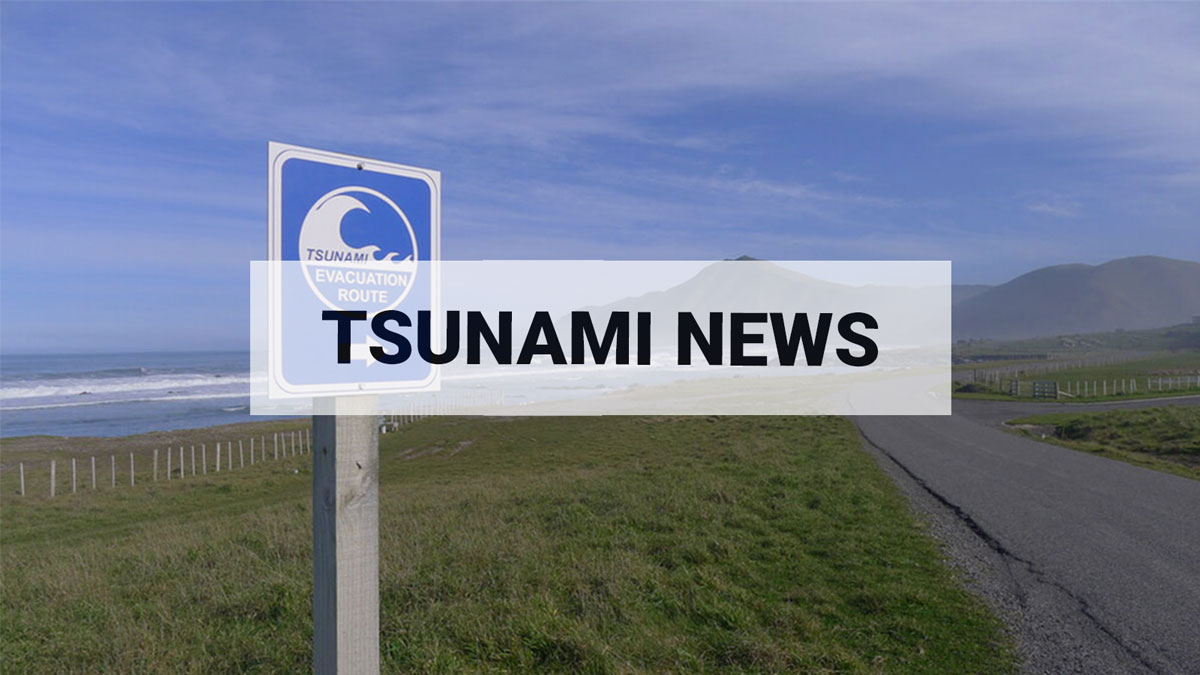
 A massive magnitude 8.8 earthquake struck off the coast of Russia on Tuesday, sparking tsunami warnings -- and evacuations -- in Hawaii and alerts for other areas of the U.S. West Coast.In a message posted on social media, President Donald Trump urged people to "STAY STRONG AND STAY SAFE" and to monitor updates on the tsunami.gov online dashboard.In Hawaii, the National Weather Service called for "urgent action" to protect lives and property.
A massive magnitude 8.8 earthquake struck off the coast of Russia on Tuesday, sparking tsunami warnings -- and evacuations -- in Hawaii and alerts for other areas of the U.S. West Coast.In a message posted on social media, President Donald Trump urged people to "STAY STRONG AND STAY SAFE" and to monitor updates on the tsunami.gov online dashboard.In Hawaii, the National Weather Service called for "urgent action" to protect lives and property.
Officials there urged residents to leave beaches and evacuate low-lying areas for higher ground or to take shelter on at least the fourth floor of a building.The first tsunami waves were forecast to reach Hawaii just after 7:15 p.m. local time -- or 1:15 a.m. ET. Destructive tsunami waves are expected, according to Oahu Emergency Management.All shores of the island are at risk because tsunami waves wrap around islands, according to the National Weather Service."The danger can continue for many hours after the initial wave as subsequent waves arrive. Tsunami heights cannot be predicted and the first wave may not be the largest,"
the NWS said in an alert.In a press conference Tuesday evening, Hawaii Gov. Josh Green called on people to leave low-lying coastal areas.
"If you stay on the beaches, you could risk death," he said.
He said officials would have a better sense of how powerful the coming wave is when it passes Midway, in the Northern Pacific."God willing, these waves will not hurt us," Green said. "But you have to assume that they will be life-threatening."Amid reports of traffic gridlock as residents evacuated the shoreline, the governor said he thought there was plenty of time for people to reach higher ground and that it appeared traffic was already easing.Sirens were set to go across the Hawaii islands 10 minutes after each hour for the next three hours as a part of a statewide warning system.In an interview with ABC Honolulu affiliate KITV, Honolulu Mayor Rick Blangiardi urged residents to move to higher ground."We need people to stay calm but also to act accordingly. If you can get to higher ground if you're in a low-lying area, please do that." He urged caution on the roads amid "bumper-to-bumper traffic" during evacuations.
Tsunami alerts for U.S. West Coast -- and elsewhere in the world
In the wake of the quake, a tsunami warning was also issued for Alaska's Aleutian Islands and for Northern California, from Cape Mendocino -- located about 200 miles north of California -- to the Oregon border. The rest of the California coast as well as Oregon and Washington are under a tsunami advisory, while the threat was being evaluated.
The U.S. territories of Guam and American Samoa are also under a tsunami advisory, according to USGS.
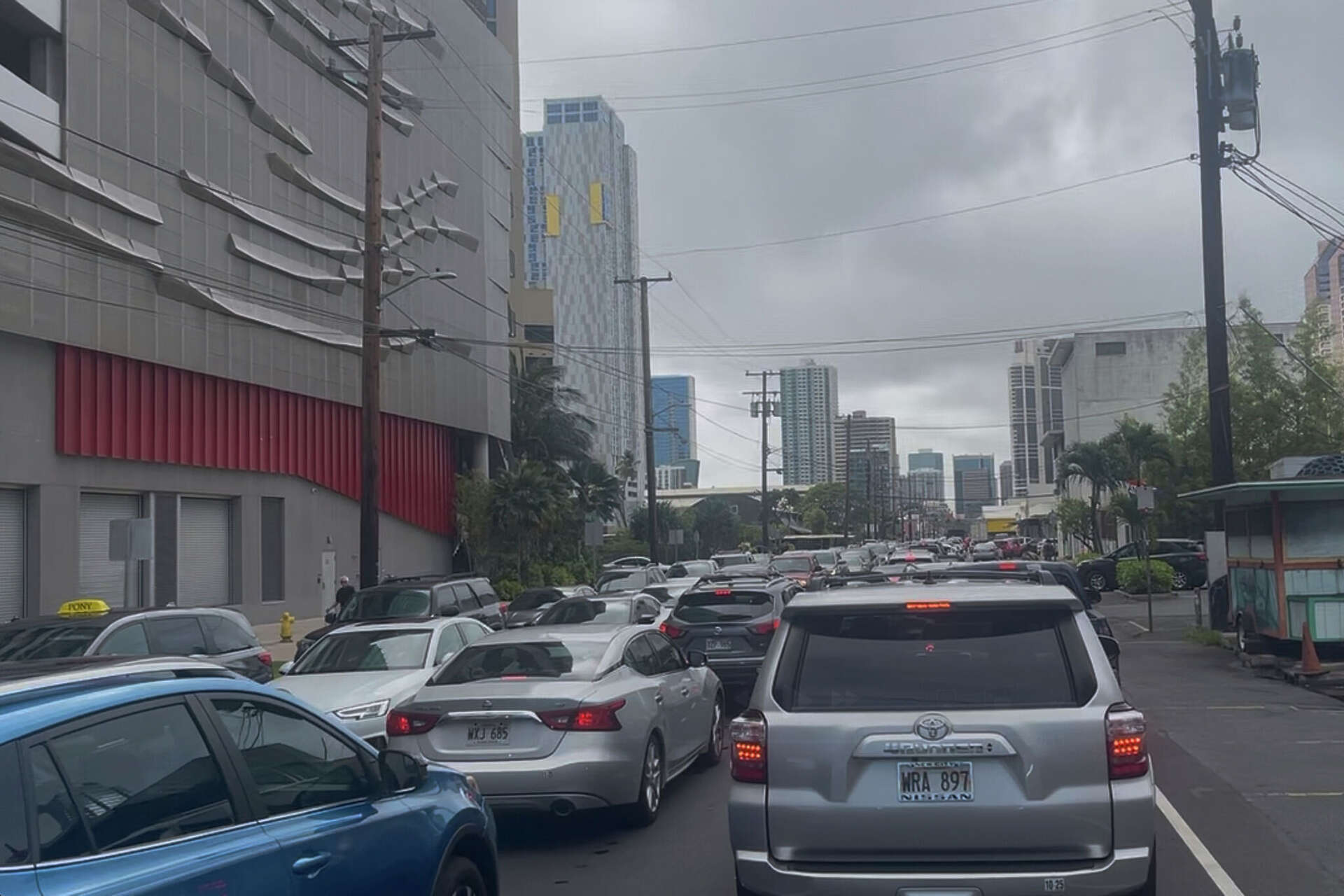
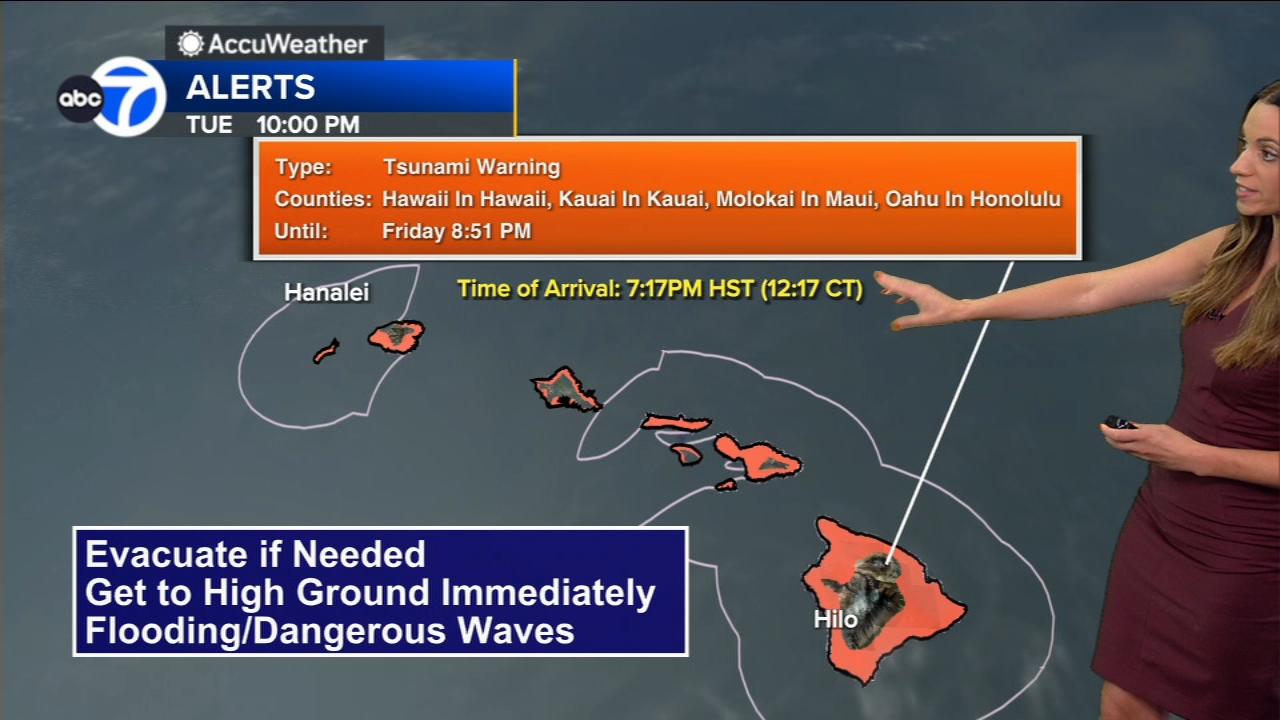 The intense quake occurred about 85 miles off the east coast of Russia's Kamchatka Peninsula with a depth of nearly 12 miles, according to the U.S. Geological Survey. It was one of the most powerful earthquakes ever recorded by the agency, which upgraded its magnitude from initial reports of 8.0 and 8.7.
The intense quake occurred about 85 miles off the east coast of Russia's Kamchatka Peninsula with a depth of nearly 12 miles, according to the U.S. Geological Survey. It was one of the most powerful earthquakes ever recorded by the agency, which upgraded its magnitude from initial reports of 8.0 and 8.7.
Magnitude 6.3 and 6.9 aftershocks were also reported in the area, according to USGS.
Japan's meteorological agency warned that a tsunami about 1 meter (3 feet) high is expected to reach Hokkaido in the north around 10:00 a.m., local time, with waves arriving later in the day along parts of eastern Honshu and Kyushu in the south.People are warned to stay away from the coast and river mouths and not to approach the water to observe.Ecuador and Chile are also under tsunami alerts, according to local officials.
A tsunami warning means that a tsunami that could cause widespread, dangerous flooding and powerful currents is expected. A tsunami watch means a distant earthquake has occurred and a tsunami is possible.
A tsunami advisory was issued for all of the California coast after an 8.8 magnitude earthquake struck off the eastern coast of Russia, sending powerful waves slamming into buildings in Siberia and northeastern Japan.According to the U.S. Tsunami Warning Center, the advisory was in effect for the entire West Coast, including Washington and Oregon, as well as portions of British Columbia and Alaska. A more severe tsunami warning is in effect in Hawaii, Guam, and the western section of Alaska’s Aleutian Islands, where residents have been urged to immediately evacuate coastal areas.A tsunami advisory is the middle level of the U.S. Tsunami Warning Center three-tier alert system — watch, advisory and warning — and means that strong currents and dangerous waves are expected and that people should stay off of beaches. Should a tsunami materialize in California, it would hit the Mendocino County coast at 11:50 p.m. and reach the Los Angeles area by 1 a.m., according to the warning center.
The largest impact is expected in Crescent City in Del Norte County, where waves of up to 5.4 feet are predicted. Crescent City’s harbor was destroyed and one man died in a 2011 tsunami, which was generated from a 9.1 magnitude earthquake off the east coast of Japan.
Waves of up to 3.8 feet are predicted in Port San Luis in San Luis Obispo County. The rest of the California coast is to predicted see waves of 1.4 feet or less, with waves in Los Angeles expected to be less than 1 foot.The earthquake struck off of the eastern coast of Russia’s Kamchatka Peninsula in eastern Siberia at 9:25 a.m. Wednesday local Russian time — which is 4:25 p.m. Tuesday PDT — generating strong tremors that injured several people, according to reporting by Reuters.
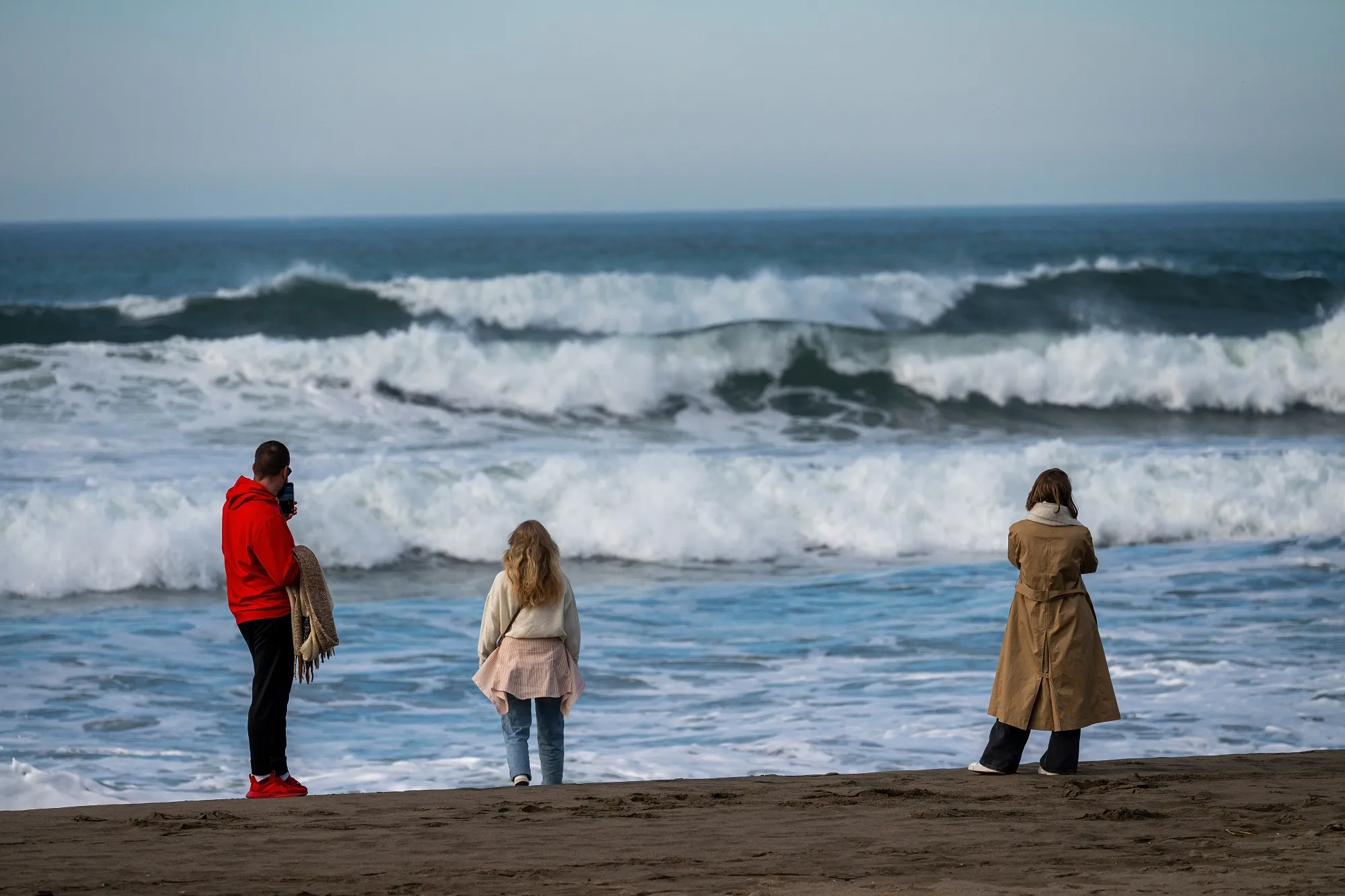
 A tsunami of 10 to 13 feet hit the Kamchatka Peninsula in Siberia within hours of the earthquake, damaging buildings, including a kindergarten, according to Reuters. Japanese officials advised people to evacuate tsunami-prone areas along the country’s east coast, warning that waves of up to 10 feet could strike the coastline.Hawaii News Now reported congested roadways as people heeded evacuation plans, and some were seen stocking up at Costco ahead of the expected arrival of the tsunami, which could come as early as 7:17 p.m. local time, or 10:17 p.m. PDT.One of the first tsunami reports came in Hokkaido, Japan, where the Nemuro Hanasaki port experienced a 1-foot tsunami, according to NHK, the Japanese broadcaster. NHK footage showed buildings that appeared to be warehouses being swept away by strong tsunami currents in northeastern Japan.
A tsunami of 10 to 13 feet hit the Kamchatka Peninsula in Siberia within hours of the earthquake, damaging buildings, including a kindergarten, according to Reuters. Japanese officials advised people to evacuate tsunami-prone areas along the country’s east coast, warning that waves of up to 10 feet could strike the coastline.Hawaii News Now reported congested roadways as people heeded evacuation plans, and some were seen stocking up at Costco ahead of the expected arrival of the tsunami, which could come as early as 7:17 p.m. local time, or 10:17 p.m. PDT.One of the first tsunami reports came in Hokkaido, Japan, where the Nemuro Hanasaki port experienced a 1-foot tsunami, according to NHK, the Japanese broadcaster. NHK footage showed buildings that appeared to be warehouses being swept away by strong tsunami currents in northeastern Japan.
The U.S. Tsunami Warning Center had initially issued a lower-tier tsunami watch for the West Coast of the U.S. earlier Tuesday afternoon. The upgraded tsunami advisory alert was sent out around 6:30 p.m.Should a tsunami materialize, it would hit Fort Bragg in Mendocino County at 11:50 p.m. Tuesday, Crescent City in Del Norte County at 11:55 p.m.
Then, in the early hours of Wednesday morning, potential waves would reach Monterey at 12:15 a.m., San Francisco at 12:40 a.m. Wednesday, the Los Angeles harbor at 1:05 a.m., Newport Beach at 1:10 a.m., and Oceanside and La Jolla at 1:15 a.m.
Officials warned that the first tsunami wave might not be the largest. In fact, the first tsunami wave usually is not the highest one, and tsunamis can last for hours.In the devastating tsunami of 1964 that hit Crescent City, people were lulled into a false sense of security after a series of smaller waves, and some had returned to start cleaning up when the fourth wave hit. Surges as high as 21 feet above the average low tide smashed the city, washing away 29 city blocks and killing at least 11 people.
Officials warn that tsunami waves that seem relatively small — like 6 inches in height — can be destructive.It only takes six inches of fast-moving water to knock over an adult and two feet of fast-moving water to carry away most vehicles.“Strong currents can injure and drown people in or near the water and damage and destroy boats and infrastructure in harbors,” the National Tsunami Hazard Mitigation Program says.L.A. Mayor Karen Bass said she was in touch with coastal leaders and the Port of L.A. about overnight preparations and urged residents to sign up for emergency alerts at NotifyLA.org.San Francisco officials said they were “working together to evaluate whether the evacuation of shoreline areas is necessary, and will send out additional alerts as soon as possible.”According to the National Tsunami Warning Center, a watch is issued as an advance notice to areas that could potentially be impacted by a tsunami "at a later time" and is meant to alert people in affected areas to be on alert for possible conditions after an earthquake.
An advisory, however, basically means to stay out of the water and away from the coast; the official language from the National Weather Service is to "Take Action — a tsunami with potential for strong currents or waves dangerous to those in or very near the water is expected or occurring. There may be flooding of beach and harbor areas. Stay out of the water and away from beaches and waterways. Follow instructions from local officials."
The Governor's Office of Emergency Services stated that it is "monitoring any potential impacts to the state" from the quake and tsunami advisory.

The quake struck at about 4:25 p.m. Aftershocks measuring magnitudes of 6.9 and 6.3 were recorded over the ensuing hour after the original temblor, according to the U.S. Geological Survey.More serious tsunami warnings were issued for Hawaii and the Alaska coast in response to the quake.
The 2011 tsunami
A pair of tsunami surges moved through Mission Bay in 2011, originating after a powerful quake in Japan, separated by about 12 hours. The initial wave's arrival in Mission Bay’s Quivira Basin, east of Mariners Basin and west of Sea World, cau sed damage to multiple boats and kept lifeguards busy.The second wave, about 12 hours later, was powerful enough to break a 100,000-pound barge free. A portion of the dock at Seaforth Marina was crushed, multiple cement pylons were displaced and several boats were pushed into one another.Many people ignored local authority warnings and went to San Diego’s shoreline with their cameras or surfboards expecting a show. Despite water receding by as much as 3 feet in some areas, the majority walked away disappointed.
sed damage to multiple boats and kept lifeguards busy.The second wave, about 12 hours later, was powerful enough to break a 100,000-pound barge free. A portion of the dock at Seaforth Marina was crushed, multiple cement pylons were displaced and several boats were pushed into one another.Many people ignored local authority warnings and went to San Diego’s shoreline with their cameras or surfboards expecting a show. Despite water receding by as much as 3 feet in some areas, the majority walked away disappointed.
Japan and the US have issued tsunami warnings after a powerful magnitude 8.8 earthquake struck Russia on Wednesday.Official evacuation orders have been issued to people on the Pacific coast of Japan and in Hawaii.The first tsunami waves, at 30cm high, arrived in the northern coast of Japan's Hokkaido prefecture before 10.40 local time (02.40 BST), Japanese public broadcaster NHK reported. Waves at 40cm high have been observed in Tokachi, in Hokkaido.US authorities have issued a tsunami warning for Hawaii, which warns it could face "destructive" 3-meter high waves. A tsunami watch has been issued for Alaska.
Waves 1-3 meters (3.3 to 10 feet) high could threaten the US island territory of Guam, according to the US Pacific Tsunami Warning Center, which is based in Honolulu. A tsunami is a series of powerful waves and can cause significant damage.
The earthquake magnitude was revised to 8.8 after an earlier measurement of 8.7.The Japanese government has issued an evacuation order to people on the Pacific coast, saying: "Damage due to tsunami waves is expected. Evacuate immediately from coastal regions and riverside areas to a safer place such as high ground or an evacuation building."Tsunami waves are expected to hit repeatedly. Do not leave safe ground until the warning is lifted," it added.Japan's Prime Minister Shigeru Ishiba said authorities were "working to access the situation", adding that any relief efforts will "put human lives first".There was no confirmation of any damage so far, Ishiba said.In Hawaii, officials ordered an "immediate evacuation" of large parts the island Oahu, including the state capital Honolulu."Take Action! Destructive tsunami waves are expected," Honolulu's Department of Emergency Management says in alerts on social media.
The US tsunami warning system has also issued tsunami advisory for California, Oregon and Washington states.
According to the US National Weather Service the first waves are expected to arrive at California at around 11.50pm local time (7.50am BST). Multiple waves are expected, lasting for 10 to 36 hours, it added.
Residents in California have received official SMS alerts warning them to avoid going to the coast and beaches, while stressing that there is no evacuation.Speaking to the BBC's Newsday programme, Helen Janiszewski, Assistant Professor, Geophysics and Tectonics Division at the University of Hawaii said that the earthquake ranked among the ten most severe in recorded history.According to the US Geological Survey, at magnitude 8.8 it was tied at the sixth most severe quake in history, with the 2010 earthquake in Biobío, Chile, and the 1906 earthquake in Esmeraldas, Ecuador.A tsunami with a wave height of 3-4 meters was recorded in parts of Russia's Kamchatka Peninsula in its Far East, Russian officials said.The tsunami warning was triggered by a powerful earthquake which struck about 126km (78 miles) from Petropavlovsk-Kamchatsky, Russia, at a depth of 18 kilometres, according to the United States Geological Survey.In Russia, the
tremor generated a tsunami of 3-4 metres in Kamchatka, according to Sergei Lebedev, the regional minister for emergency situations.
There were no injuries, but a kindergarten was damaged, according to preliminary information, Lebedev added.
"Today's earthquake was serious and the strongest in decades of tremors," Kamchatka Governor Vladimir Solodov said in a video posted on the Telegram messaging app.The National Tsunami Warning Center has issued a Tsunami Watch for the California Coast on Tuesday evening, including coastal areas spanning from Mendocino to Monterey counties.The center issued the watch after an 8.7 magnitude earthquake struck off the coast of Russian’s Kamchatka Peninsula on Tuesday afternoon.According to the center, a Tsunami Watch means that people along the coast should be prepared to evacuate if asked.The watch includes the San Francisco Bay Area, including Sonoma, Napa, Larkspur, Vallejo, San Francisco, Berkeley, Oakland, Santa Cruz, Monterey and other ocean and bayside communities. Any larger waves are expected shortly after midnight in the Bay Area.
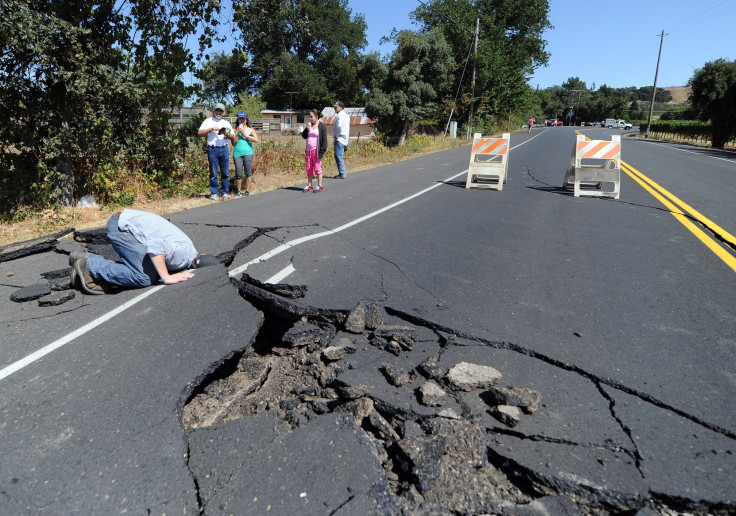
The center will upgrade the Tsunami Watch to a Tsunami Advisory if a tsunami is possible and a Tsunami Warning if a tsunami is imminent.A massive magnitude 8.8 earthquake struck off the coast of Russia on Tuesday, sparking tsunami warnings -- and evacuations -- in Hawaii and alerts for other areas of the U.S. West Coast.In Hawaii, the National Weather Service called for "urgent action" to protect lives and property.Officials there urged residents to leave beaches and evacuate low-lying areas for higher ground.The California coast was upgraded to a Tsunami Advisory from a Tsunami Watch, and if a wave is generated, it's expected to reach California at 11:50 p.m. and the Los Angeles area around 1 a.m. local time."Port Police and emergency officials are actively responding to tonight's Tsunami Advisory. Residents and workers in and around the L.A. Harbor area are urged to stay alert, avoid the waterline, and follow official instructions," said L.A. Mayor Karen Bass on X.The first tsunami waves were forecast to reach Hawaii just after 7:15 p.m. local time, which is 1:15 a.m. ET. Destructive tsunami waves are expected, according to Oahu Emergency Management.
Residents in Honolulu were urged to evacuate the primary evacuation zone or go to at least the fourth floor of a building."Due to a massive earthquake that occurred in the Pacific Ocean, a Tsunami Warning is in effect for those living in Hawaii," President Donald Trump posted on social media, urging people to "STAY STRONG AND STAY SAFE."All shores of the island are at risk because tsunami waves wrap around islands, according to the National Weather Service."The danger can continue for many hours after the initial wave as subsequent waves arrive. Tsunami heights cannot be predicted and the first wave may not be the largest," the NWS said in an alert.Sources told ABC News the Hawaii Emergency Management Agency has activated its Emergency Operations Center. Officials have also proactively activated their Joint Information Center and are meeting with Hawaii Gov. Josh Green's team, who will hold a press conference at 5 p.m. local time.Sirens were set to go off on the Hawaii islands 10 minutes after each hour for the next three hours as a part of a statewide warning system.
In an interview with ABC Honolulu affiliate KITV, Honolulu Mayor Rick Blangiardi urged residents to move to higher ground."We need people to stay calm but also to act accordingly. If you can get to higher ground if you're in a low-lying area, please do that." He urged caution on the roads amid "bumper-to-bumper traffic" during evacuations.In addition, a tsunami warning was issued for Alaska's Aleutian Islands.
The coasts of California, Oregon and Washington are under a tsunami advisory, while the threat was being evaluated.The U.S. territories of Guam and American Samoa are also under a tsunami advisory, according to USGS.The intense quake occurred about 85 miles off the east coast of Russia's Kamchatka Peninsula with a depth of nearly 12 miles, according to the U.S. Geological Survey. It was one of the most powerful earthquakes ever recorded by the agency, which upgraded its magnitude from initial reports of 8.0 and 8.7.Magnitude 6.3 and 6.9 aftershocks were also reported in the area, according to USGS.An advisory was also issued for Japan's Pacific Coast regions from Hokkaido to Kyushu.Japan's meteorological agency warned that a tsunami about 1 meter (3 feet) high is expected to reach Hokkaido in the north around 10:00 a.m., local time, with waves arriving later in the day along parts ofeastern Honshu and Kyushu in the south.
People are warned to stay away from the coast and river mouths and not to approach the water to observe.Ecuador and Chile are also under tsunami alerts, according to local officials.A tsunami warning means that a tsunami that could cause widespread, dangerous flooding and powerful currents is expected. A tsunami watch means a distant earthquake has occurred and a tsunami is possible.
Posted on 2025/07/30 02:11 PM
